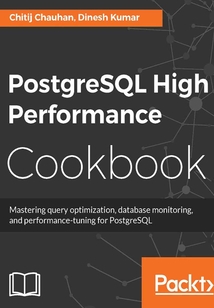舉報(bào) 

會(huì)員
PostgreSQL High Performance Cookbook
最新章節(jié):
Detecting a missing index
IfyouareadeveloperoradministratorwithlimitedPostgreSQLknowledgeandwanttodevelopyourskillswiththisgreatopensourcedatabase,thenthisbookisidealforyou.Learninghowtoenhancethedatabaseperformanceisalwaysanexcitingtopictoeveryone,andthisbookwillshowyouenoughwaystoenhancethedatabaseperformance.
最新章節(jié)
- Detecting a missing index
- Forcing a query to use an index
- Finding unused indexes
- Partial indexes
- Combined indexes
- Concurrent indexes
品牌:中圖公司
上架時(shí)間:2021-07-09 18:08:15
出版社:Packt Publishing
本書(shū)數(shù)字版權(quán)由中圖公司提供,并由其授權(quán)上海閱文信息技術(shù)有限公司制作發(fā)行


